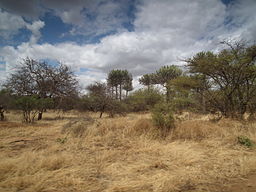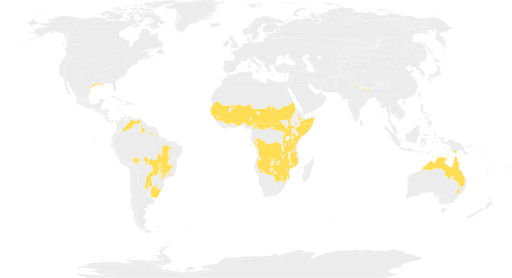Biosphere Contents
6. Biomes
Tropical grasslands and savannas experience great variability in precipitation and temperature
Seasonality is marked in the savanna, with significant variation in precipitation rates throughout the year. Dry seasons may last seven months or longer, with much of the rain occurring in thunderstorms during the one or sometimes two wet seasons. There is variability in seasonal and diurnal temperature, but monthly mean temperature never falls below 18°.

Compared to tropical rain forest, the savanna has limited biodiversity, although it is still high in comparison to temperate biomes. Plant life is dominated by grasses and trees, which are adapted to cope with dry conditions (xerophytic). Large herbivores like zebra and wildebeest are common as are their predators - lions, cheetah and hyenas. The large populations of herbivores have a strong impact on the vegetation, promoting grasses and hindering the regeneration of trees.

Tropical grasslands or savanna occur in large parts of Africa, South America, and Australia, and have been estimated to cover one quarter of the world's land surface. These grasslands are positioned between the humid, tropical rain forest and the dry desert in the area between approximately five degrees to twenty degrees north and south of the Equator.
What are the main characteristics of the tropical grassland biome?